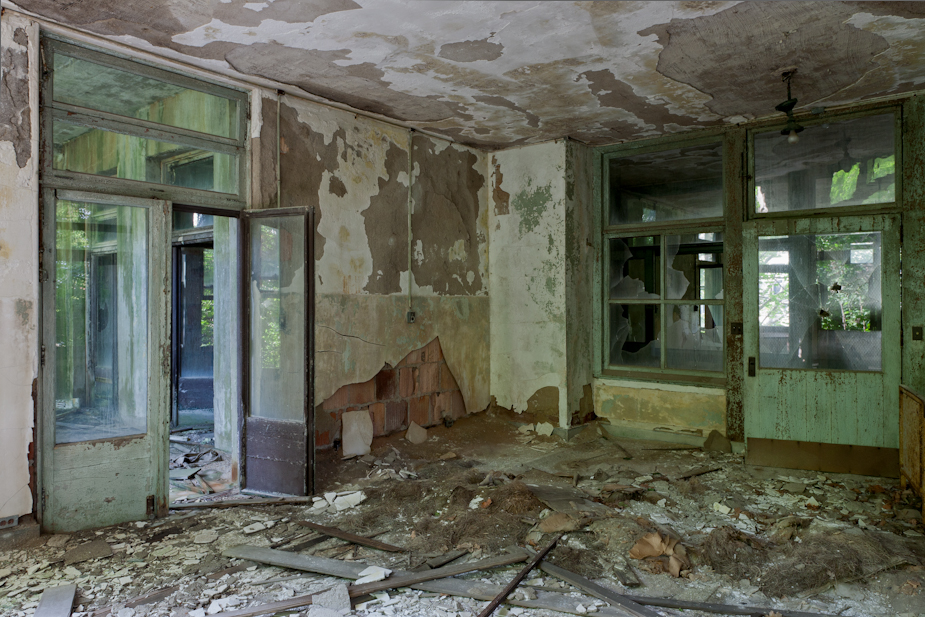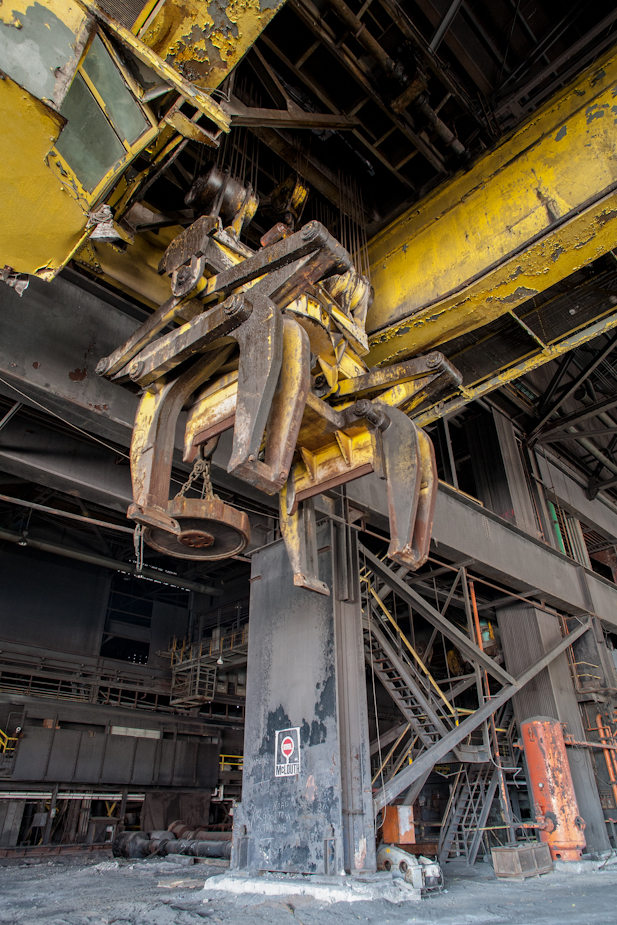Mono Lake. Eastern Sierras, California.
(Night. Full moon. 7 minutes. Lit by moonlight.)

Mono Lake. Eastern Sierras, California.
(Night. Full moon. 7 minutes. Lit by moonlight.)

Inside the women's wards at a New York Tuberculosis Sanatorium.

Lobby detail. Waldo Hotel, West Virginia.

Mono Lake.
(Night. Full moon. 12 minutes. Lit by moonlight.)
When I shoot at night, I shoot a series of "test shots" to check exposure and make sure my composition is right. This means that I crank my ISO up to 1600 or 3200 and take a shot for between 5-20 seconds, depending on the light, and then multiply out my exposure as I drop it down to an ISO I prefer to shoot at. (Example: If my test shot is ISO 1600 @ 10 seconds, and I'm happy with the exposure, I could shoot it at those settings, or try: ISO 800 @ 20 seconds, ISO 400 @ 40 seconds, ISO 200 @ 80 seconds or ISO 100 @ 160 seconds.)
On this particular night, I shot this test shot at ISO 1600 and was pretty happy with the exposure, so I dropped the ISO down to 200 and shot a 60 second exposure.

(6 seconds. f/8. ISO 1600.)

(60 seconds. f/8. ISO 200.)
In the end, I actually liked the test shot better, because in the 60 second image, the clouds were moving quickly, which caused a lot of motion blur in the clouds.
I used to delete most of my test shots when I shot with the 5DMkI because the noise at 800 or 1600 was so awful, I wouldn't share the images online, much less print them. Now with the 5DMkIII, I keep all test shots, especially if they're shot at 1600.
Next step, do some test prints at night of ISO 1600 and see how they print at various sizes.

On June 29 last year, I made my first Google+ post after receiving an invite from Googler +Cody Bratt. At the time, I never realized that it would have such an impact on my life. I know, it sounds crazy right? (The people not active on G+ definitely think I'm a bit loony for making such statements, but it doesn't matter.) I continue to say with conviction, that Google+ has made a difference in my life.
Before I joined Google+, I took one or two photography related trips each year, mostly to the East Coast to explore abandoned buildings, but I stopped spending a lot of time shooting locally after a falling out with a few photographers. I was uninspired for a while, but that changed when I joined Google+.
Within six months of joining, I attended my first photowalk in San Francisco, followed +Thomas Hawk and a group of 50 photographers down to Death Valley for an extended weekend, spent a weekend camping in Big Sur with a group of photographers and hosted a Yosemite photowalk during the full moon. During those 6 months, I was not only getting out and meeting people in person, but I was interacting with other photographers online, engaging in conversations, joining hangouts and planning shoots with new photographers in the area.
I felt inspired again.
This week, I am attending three different photowalks. One of them involves a group of locals welcoming Canadian +Karin Nelson to California for the first time! (How cool is that G+?)
Sure, it might be crazy to spend a few hours everyday sharing photos, enjoying photos, laughing at the humor of friends and chatting with strangers on hangouts, but Google+ has completely changed the way I go about photography. If you put in the time and effort, interact and engage, you will find that there is a whole amazing group of people out there waiting to be discovered.

Flight deck. USS Hornet, Alameda.
(Night. Full moon. 15 seconds. Lit by ambient and moonlight.)

Golden Gate Bridge from Marshall Beach, San Francisco.

At its peak, McLouth Steel in Trenton, Michigan only produced 1-2% of the domestic steel market, but the plant was responsible for a few innovations, which made it more well known.
In 1962, it was the first plant to use computer controls and it was the first American steel plant to finish a product using continuous casting.
The plant was purchased in 1996 by the Detroit Steel Company, but after a few unsuccessful startups, the plant became nonoperational.
(From the archives, 2009.)

This Eastern Sierra Mine was built in 1909 at an elevation of 8,000ft. It remained in operation until 1938.
(Night. Full moon. 3 minutes. Lit by moonlight.)

A safe still remains inside a back room of the basement in the administration building of the now abandoned Safe Cabinet Company in Ohio.

Marshall Beach, California.

Mono Lake Tufas, California.
(Night. Full moon. 15 seconds. f/9. ISO 200)

Many former asylums contain theatres, so I am used to stumbling upon them now and again, but finding one inside the administration building of The Safe Cabinet Company in Ohio was a bit of a surprise. Sadly all the seats had been ripped out.

The Safe Cabinet Company began in Ohio in 1905. The complex contained a large factory and administrative building, which contained a theatre that spanned from the basement (shown here) to the third floor.
The manufactured safes were scientifically tested and contained an air gap full of fireproof materials to help protect valuable materials from fire.
The company merged with Remington Rand Inc. in 1926, which combined safe manufacturing with a visible and vertical business recording system. They went out of business in 1955.